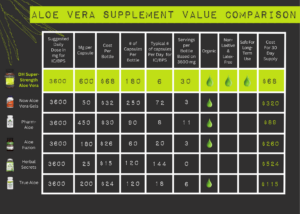Numerous homeowners grapple with the challenge of spider infestations, leading them to explore various methods for pest control. One recommendation that surfaces repeatedly is the use of rubbing alcohol. But does rubbing alcohol effectively kill spiders? This article delves deep into the nature of spiders, the properties of rubbing alcohol, and examines the efficacy of this common household substance as a spider deterrent.
Understanding Spiders: The Pest with Many Forms
Spiders, belonging to the class Arachnida, are integral components of ecosystems. With over 45,000 identified species, these arachnids exhibit diverse behaviors and habitats. Some are harmless, while others can pose a threat to humans or pets. Most spiders prey on insects, serving as natural pest control agents. However, when their presence becomes unwelcome in homes, an infestation concerns many individuals.
Contrary to popular belief, spiders often bite only in self-defense. Therefore, learning to coexist with them can be a viable option. However, if one opts for eradication, many turn to household products, like rubbing alcohol, to eliminate these pests effectively.
Unveiling Rubbing Alcohol: What You Need to Know
Rubbing alcohol, or isopropyl alcohol, is commonly utilized for its antiseptic properties. It can effectively disinfect surfaces, remove sticky residues, and even serve as a solvent for various applications. Typically composed of around 70% isopropyl alcohol, this substance evaporates quickly, which can be beneficial in cleaning scenarios.
However, its potential as a pest control agent warrants examination. Rubbing alcohol disrupts cellular structures upon contact; this quality raises the question: how does this mechanism impact spiders?
How Rubbing Alcohol Affects Spiders
Applying rubbing alcohol to spiders can be lethal. When sprayed directly, it can dry out the spider’s outer protective layer, ultimately leading to dehydration. The high concentration of alcohol infiltrates the spider’s body structure, causing cellular malfunction and death.
Nonetheless, efficacy can vary. The size of the spider, its resilience, and the concentration of the alcohol play pivotal roles in determining the outcome. Notably, smaller spiders might succumb faster than their larger counterparts, which may exhibit greater resistance to environmental stressors.
Practical Considerations: Usage and Safety
While rubbing alcohol can be an effective spider killer, some practical considerations warrant attention. Firstly, when deploying this method, one must ensure proper ventilation. The fumes from rubbing alcohol can be strong, and prolonged inhalation could lead to respiratory discomfort.
Moreover, spray bottles should be used judiciously. Spraying spiders directly requires precise aim, which might prove challenging at times. However, creating a solution for broader application—like treating corners or potential nesting spots—may yield better results. To prepare, mix a solution of 70% rubbing alcohol with equal parts water, ensuring it still retains enough potency.
Alternative Uses: Spider Deterrence
Beyond its lethal capabilities, rubbing alcohol can serve as a deterrent. Routine applications can help keep spiders at bay, particularly if sprayed in areas where spiders are likely to set up residence. These may include windowsills, door frames, and corners. The strong scent can repel spiders and other pests, reducing the likelihood of an infestation.
Comparative Analysis: Rubbing Alcohol vs. Other Methods
When considering spider control methods, rubbing alcohol stands as one alternative among many. Chemicals found in commercial insecticides may deliver rapid results but often come with harsh side effects. Propane torches, traps, and natural deterrents like diatomaceous earth offer other solutions. Each method features unique benefits and drawbacks. Rubbing alcohol, heralded for its accessibility, presents a viable option for those seeking immediate control without resorting to toxic chemicals. Yet, prevention remains the most effective. Routinely cleaning and sealing entry points should be prioritized to avert future infestations.
The Environmental Impact: A Lasting Concern
As one evaluates pest control options, the environmental implications must not be disregarded. Rubbing alcohol, in moderate use, presents minimal threat to the environment. Unlike counterpart chemicals, its biodegradability makes it a lower-impact option. Nevertheless, care should be exercised to avoid over-application, which could introduce unintended consequences to local flora and fauna.
Conclusion: Weighing the Options
In summary, rubbing alcohol can indeed kill spiders, making it an option for those struggling with unwelcome arachnid visitors. Its effectiveness hinges on the concentration used, the method of application, and the spider’s size. Although this household item holds promise as both an insecticide and deterrent, opting for comprehensive strategies focusing on prevention and environmental stewardship generally yields the best long-term results.
Ultimately, understanding spider biology, familiarizing oneself with pest control options, and making informed decisions curtail unnecessary stress and maintain beneficial ecological balance. Maintaining cleanliness, sealing potential entry points, and exploring natural deterrents can significantly contribute to a spider-free home.





Leave a Comment